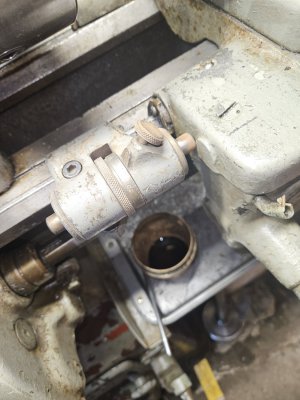- Joined
- Mar 5, 2024
- Messages
- 14
Thank you for all the replies, above. I apologize for any use of incorrect terminology.
I found a South Bend Micrometer Carriage stop, recently. I loosely fitted it onto the bed, and it appears to fit, but the stop pin does not fall on the boss of the carriage, where I assume that it should. I think it will work but am thinking that perhaps I need a bed mounting bracket, as shown in my attached illustration, above. See picture below.
I found a South Bend Micrometer Carriage stop, recently. I loosely fitted it onto the bed, and it appears to fit, but the stop pin does not fall on the boss of the carriage, where I assume that it should. I think it will work but am thinking that perhaps I need a bed mounting bracket, as shown in my attached illustration, above. See picture below.



